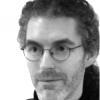Medicine is the collective, warring, practical implementation of some of our most fundamental, important views on the human condition. What do we think can and should be done about the existence of suffering? What is the purpose of life? What do we do about death and its consequences? The development and provision of medical services inevitably requires these questions to be answered at some point by most of the people involved. Why start a career in medicine or medical development? Why continue it? What to focus on? Where does meaning arise in this life choice?
Medicine is largely a response to suffering. But it cannot only be a response to suffering, because there are two paths to alleviating suffering, as we all know. The first path requires no medicine in its simplest implementations, and is to bring as quick as possible an end to the life of the suffering individual. Medicine exists because this is rarely an individual's first impulse. Few indeed follow that path down to the nihilist's logical conclusion that all entities capable of suffering should be prevented from coming into being or persuaded into destruction. Faced with situations in which an end to life is the rational choice because there is no other option, emotions ranging from dissatisfaction to rage drive the creation of individual and collective initiatives to find another option.
Nonetheless, death happens regardless. Medicine cannot yet prevent people from dying in all too many scenarios, largely those associated with aging. Even though the medical community has come around to trying to do something about aging, it remains the case that someone, somewhere, at any given time is thinking about how to make inevitable death less terrible. This is the sort of thing that medical communities do when they cannot yet solve the problem. They chew on it, measure it, try to do something, anything that can be done now to reduce the suffering associated with the intractable problem, even if that means considering the paths that none of us like to consider.
Measuring and monitoring the quality of dying in the UN Decade of Healthy Ageing
To monitor and evaluate the UN Decade of Healthy Ageing (2021-30), the World Health Organization has proposed a set of indicators of healthy ageing, based on functional ability and intrinsic capacity of older people. Functional ability is defined as the health-related attributes that enable people to be and to do what they have reason to value. This definition could include individuals who are dying; however, specific indicators for this stage have yet to be developed. Mortality rates and life expectancy are important outcome indicators used to assess health-care system performance, with health-care interventions typically aimed at reducing avoidable mortality. Nonetheless, death is inevitable, and the importance of how we die has been widely recognised, for example, by the Lancet Commission on the Value of Death. The period preceding death forms a part of the ageing trajectory and requires targeted actions to ensure that it is lived with the highest level of health and dignity. Dying well constitutes an integral component of healthy ageing.
Measuring the quality of dying can guide care and support for individuals who are dying and their families, inform clinical decision making, shape health and care delivery, support policy development and evaluation, facilitate comparisons across institutions and countries, and track changes over time across settings where people are dying and where end-of-life care should be accessible to them. However, in attempting to identify such measures, numerous questions arise. How should a good death be defined? Who should report on the quality of dying? Over what timeframe should the evaluation occur? Which descriptors should be used? Should the assessment be performed prospectively or retrospectively? How do we take account of widely varying contexts, individual preferences, and sociocultural diversities? How can measurement and monitoring be implemented worldwide?
This article explores these challenges, identifying potentially measurable indicators and ambiguities in their use, and offers recommendations towards a practical measurement framework. We aimed to define a concise, meaningful, and pragmatic set of indicators that could be collected and applied universally across countries and over time. We define a logic model of candidate variables at different conceptual levels and describe an empirical exercise for prioritising and operationalising these variables for measurement.
View the full article at FightAging








































